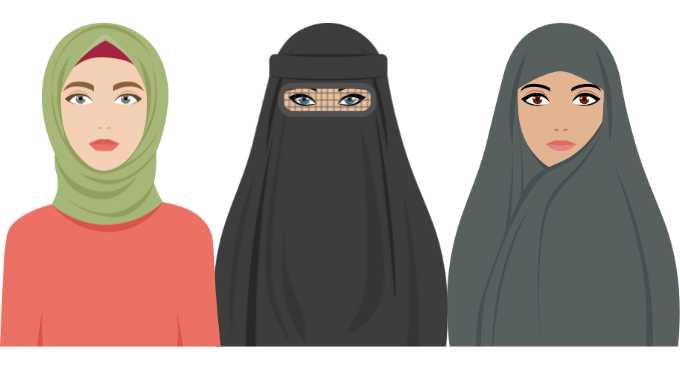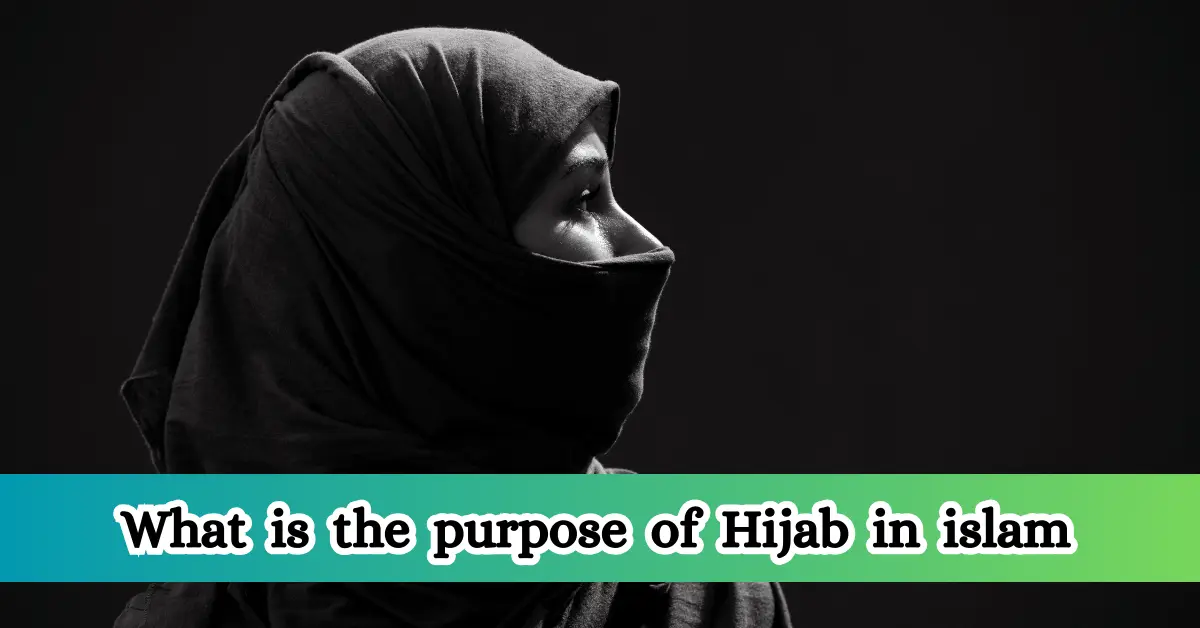The purpose of hijab in Islam is a topic of great interest and debate, not only among Muslims but also among non-Muslims who seek to understand the significance of this sacred practice.
In the first paragraph of this article, we will delve into the essence of hijab and its role in the lives of Muslim women. The hijab, which is often misunderstood as a symbol of oppression, is a powerful, full expression of faith, modesty, and liberation.
The Concept of Hijab in Islam
In Islam, hijab is not just a piece of cloth that covers a woman’s body; it is a spiritual practice that reflects a Muslim woman’s commitment to her faith. The Arabic word “hijab” means “barrier” or “partition,” and it is used to describe the physical and symbolic separation between a woman’s body and the outside world.
The hijab serves as a reminder to Muslim women of their duties towards Allah and their responsibility to maintain their dignity and modesty in public.
The Quranic Perspective on Hijab
The Quran, the holy book of Islam, guides the importance of the hijab in several verses. In Surah Al-Ahzab, Verse 59, Allah says, “O Prophet, tell your wives and your daughters and the women of the believers to draw their cloaks (jilbabs) over their bodies.
That is more suitable in that they will be recognized and not harassed.” This verse emphasizes the importance of the hijab to protect women from harm and ensure their safety in public.
The Hadith Perspective on the Hijab
The Hadith, the sayings and actions of the Prophet Muhammad (peace be upon him), also provide valuable insights into the significance of the hijab. In one Hadith, the Prophet (peace be upon him) said, “A woman is ‘awrah (private parts), and when she goes out, the devil looks at her and says, ‘You are beautiful, and you are fit for me.'” This Hadith highlights the importance of hijab in protecting women from the gaze of strangers and maintaining their modesty in public.
According to the Qur’an and Hadith, the definition of clothing and the kind of clothing commanded to be adorned is a decent, beautiful, spacious and open dress by which a person can be covered.
In Islam, a woman’s whole body from head to toe (except face, hands and feet) is satar. Which is obligatory to cover. So wear polite and spacious clothes, which are neither thin enough to make the body visible nor so narrow as to make the structure of the limbs clear.
The purpose of clothing is to keep the human organs out of sight, and it is not just for women but for both men and women.
What is the Hijab in islam and Religious Veils
Hijab Meaning

Since Islam has no customs, what kind of clothes do you wear? However, the dress’s shape, form and features were considered comprehensive, open and covering the star.
Whether one wears jeans, trousers, a shalwar to cover one’s star, or pajamas, The purpose is to cover satar.
However, the condition is that the garment should be open, not tight so that the structure of the body parts is unmistakable. The shirt on the jeans and pants should be long enough to cover the satar well.
Tight clothing, whether jeans, trousers or anything else that is not intended, is haraam, and it is not permissible to wear it.
Religious Veils

In the present age, wearing very tight clothing and not covering the head completely, not having a chador on the chest is tantamount to directly inviting sin and attracting Satan.
The veil is a guarantee of complete protection and complete success for women of every age. A woman must cover her head and face in a chador.
In today’s modern age, there is no problem with wearing many types of veil such as burqa, scarf, socks, gloves, and other clothes because in all these cases, only the woman’s convenience is considered.
What is the purpose of Hijab in islam
In Islamic society, women also get an education behind the scenes, doing business and efficiently serving the nation. Muslim women pilot doctors, engineers and people from all walks of life are playing their roles safely. That is the beauty of Islamic society. To be outside the veil of a woman is to incline both men and women towards sin.
This violates the sanctity of relationships and leads to social misery. The veil of a woman has been given so much importance that it is forbidden for her to worship without a veil and in a place without a veil.
Modesty and Liberation
One of the primary purposes of the hijab is to promote modesty and humility among Muslim women. Muslim women can focus on their inner beauty and character by covering their bodies rather than their physical appearance.
The hijab also serves as a symbol of liberation, as it allows Muslim women to move freely in public without being objectified or harassed. In a world where women are often judged based on their physical appearance, the hijab provides a powerful alternative, where a woman’s worth is measured by her character, intelligence, and faith.
Identity and Belonging
The hijab also serves as a powerful symbol of identity and belonging among Muslim women. By wearing the hijab, Muslim women can express their faith and connect with their community. The hijab is a visible representation of a Muslim woman’s commitment to her faith, and it provides a sense of belonging and connection to the global Muslim community.
Spiritual Growth
Finally, the hijab serves as a means of spiritual growth and development among Muslim women. By covering their bodies, Muslim women can focus on their inner spiritual journey and cultivate a deeper connection with Allah. The hijab is a reminder to Muslim women of their duties towards Allah, and it provides a powerful incentive to live a life of righteousness and virtue.
Common Misconceptions about Hijab
Despite its significance in Islam, the hijab is often misunderstood and misrepresented in the media and popular culture. Some common misconceptions about hijab include:
- The hijab is a symbol of oppression and subjugation.
- The hijab is only worn by Muslim women who are forced to do so by their families or communities.
- The hijab is a barrier to education and employment opportunities.
Debunking the Myths: The Reality of Hijab
The hijab is a powerful symbol of faith, modesty, and liberation. Muslim women who wear the hijab do so out of their own free will and as a means of expressing their commitment to their faith. The hijab is not a barrier to education or employment opportunities, and many Muslim women who wear the hijab are successful professionals, entrepreneurs, and leaders in their communities.
Women Wear Tight and Half-Sleeved Clothing

It is obligatory to cover the veil of women everywhere, whether it is for women or men. Therefore, a dress that is not permissible on ordinary days is unacceptable even in marriage. Thin and tight clothing in which the limbs are clear is not sufficient.
The purpose is to cover the body. If the body remains naked even after wearing it, then such clothing is not permissible. This not only diminishes a woman’s dignity but also her dignity. Don’t know why some women want to make themselves so cheap? Islam raises the dignity of women.
It is beyond my comprehension why a woman who is unquestioningly imitating the West even after becoming a Muslim does not think that she is looking at the slaves of her honor market. Why does she want to humiliate herself so much? Does he not know his worth?
Has that feeling of inferiority gone away? Therefore, Islam wants to see a woman free and dignified. Thus, only a veiled woman can live a dignified life, and the effect of the outward must be on the inward as well.
What Kind of Abaya is Correct to Wear?

A woman’s face, hands and feet up to the ankles must be covered. Now, there is no specific dress code for hiding it because Islam is a universal religion.
Therefore, there is no restriction that it is necessary to wear such fabric and design as each person’s needs may differ due to the area, customs, and heat and cold.
People in Pakistan, India and the United States cannot wear the same clothes, but Islam says that clothing should be such that it is veiled, protects from heat and cold and makes the wearer look beautiful; there is no other restriction.
Therefore, it is right to wear veiled clothes protected from heat and cold and look beautiful when worn. The same rule applies to men and women. No unique designs or restrictions exist on clothing except for men wearing silk.
To What Extent is Make-Up Permissible?

A woman’s makeup is all for her husband only. This woman will suffer the torment of Hell. The house that does not change its clothes to show off to the husband walks around with the same old fair-skinned garments that I am busy in the kitchen, and when it comes time to go out, whether it is a wedding, shopping, going to someone’s house or any cultural function.
Then they wash, put on nice clothes, and apply perfume and makeup in a way that smells even from a distance.
Who is she beautifying now? Whose heart was to be pleased, Whose love was to be drawn, Adorn and adorn, adorn, dress, fashion, everything is permissible for a woman, but for her husband at home.
Frequently Asked Questions
What is the purpose of hijab in Islam?
The purpose of hijab in Islam is to promote modesty, humility, and liberation among Muslim women. It is a means of protecting women from harm and ensuring their safety and dignity in public.
Is hijab only for Muslim women?
Yes, hijab is primarily worn by Muslim women, although some Muslim men may also wear a form of hijab, such as a turban or a beard.
